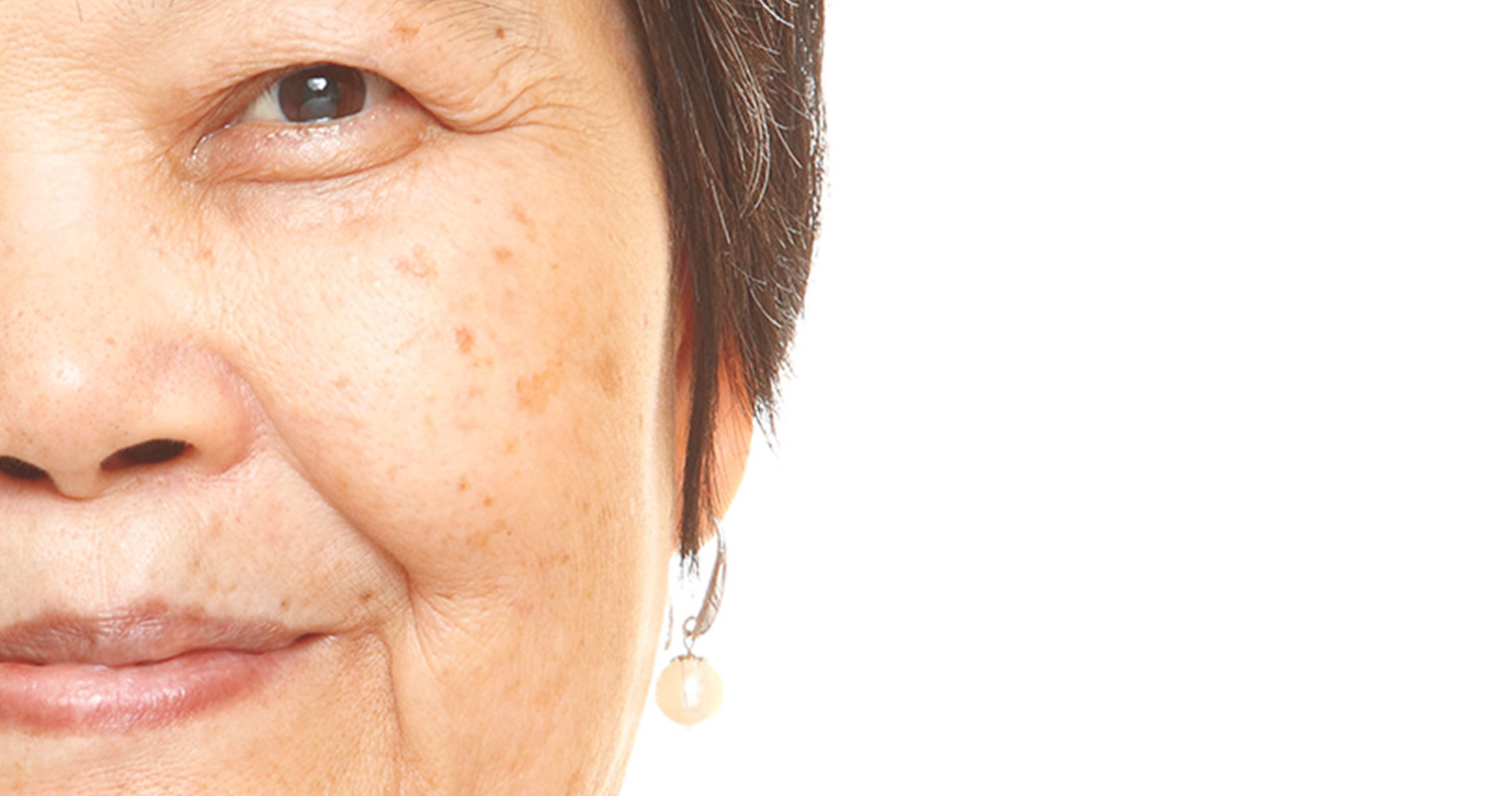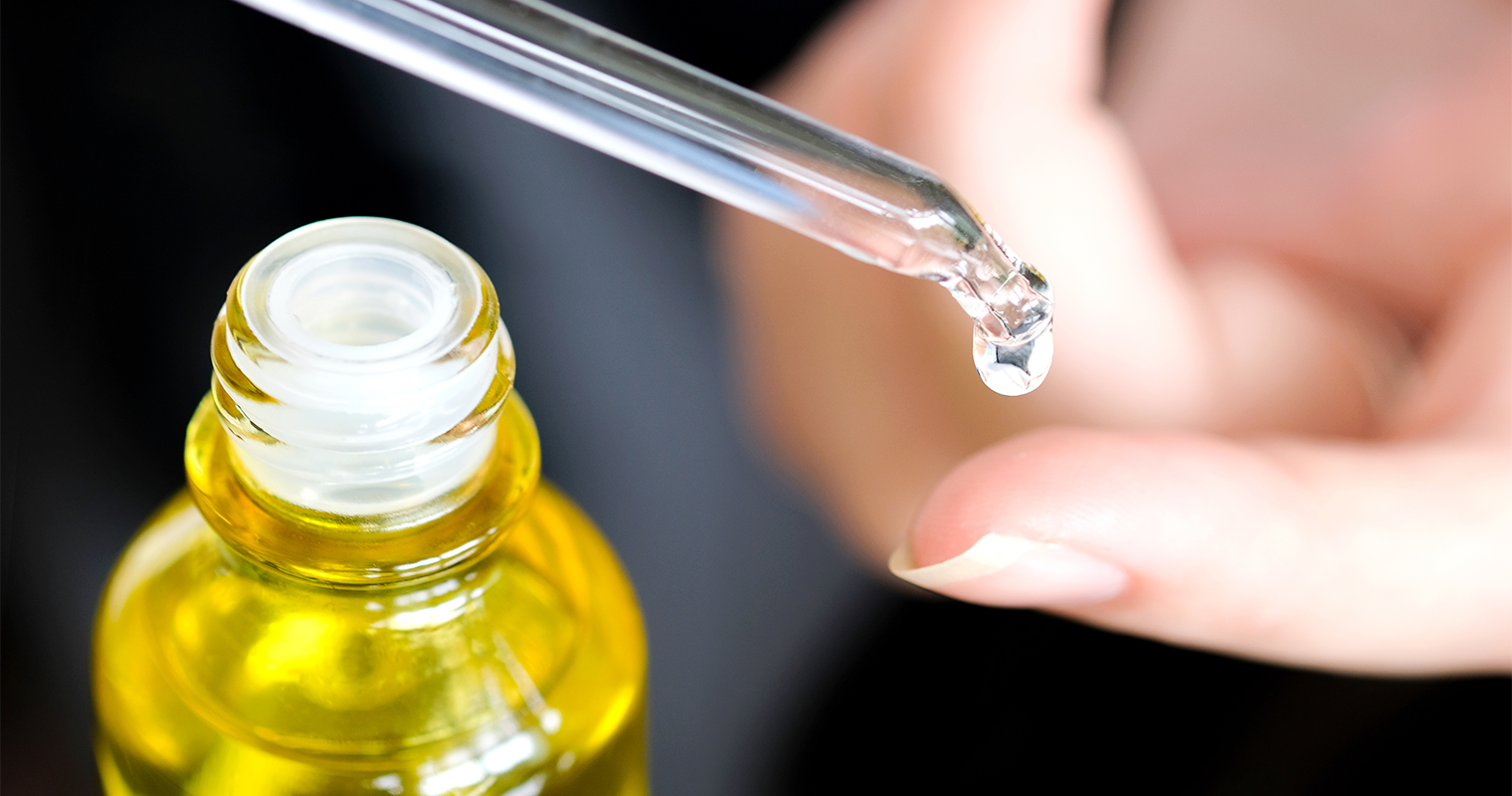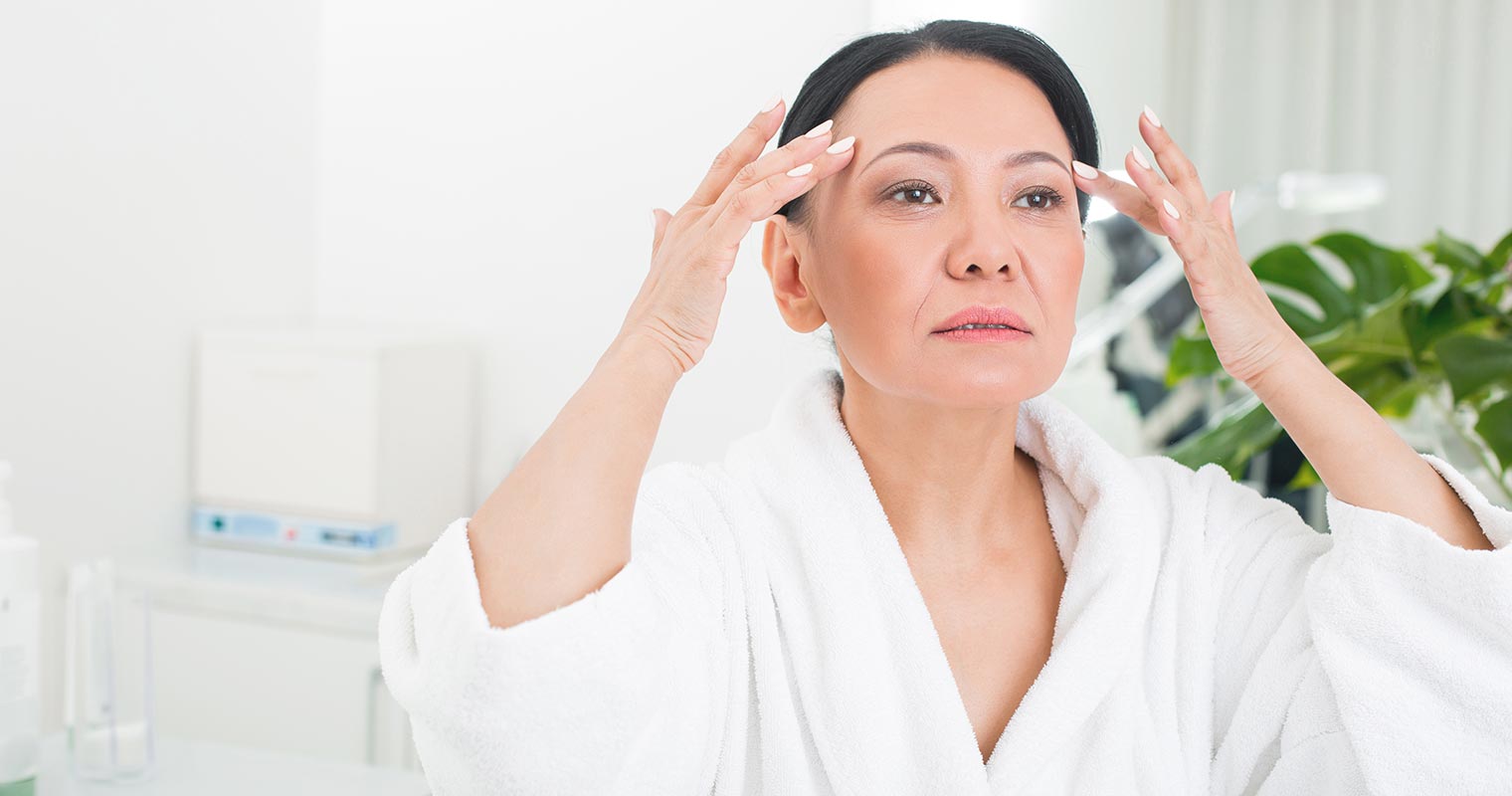Perilla Oil : Your Solution to Photo-Aging
Perilla oil or perilla ocymoides seed oil is the oil derived from the seeds of the plant perilla frutescens, an aromatic perennial plant native to Asia.
The perilla plant is often known by names such as wild sesame, Shiso, Japanese mint and Chinese basil. It is a species of the mint family with large leaves that become reddish-purple upon maturation, giving it its other popular but ironic name – ‘beefsteak’ plant.
Perilla seed oil is an edible oil with a light yellow color and a slightly nutty, sweet flavor and a distinctive sweet smell. Though less known outside of Korea, Japan, China and Thailand, it is now gaining popularity because of its potential health and pharmacological benefits.
With its high essential fatty acid and phytochemical content, perilla oil shines especially in photo-aging treatments.
What is photo-aging?
Photo-aging, like the word suggests, is the premature aging of skin caused by Ultraviolet light (UV) exposure. Oxidation resulting from UV exposure causes aging on the skin. It differs from chronological aging (time-related natural aging) and is accountable for almost 90% of the changes visible in the skin.
Signs of photo-aging
UV exposure causes a number of types of skin damages, the common ones being:
- Hyperpigmentation or abnormal pigmented spots like solar lentigines (liver spots or age spots), freckles and uneven skin tone
- General fading of skin tone
- Wrinkles around the mouth and eyes which deepen over time and become creases; forehead frown lines
- Spider veins on the neck, cheek and nose
- Rough and scaly red spots known as actinic keratosis which could lead to skin cancer
- Erythema or redness of the skin without any underlying diseases

Chemical composition
To understand how perilla oil is able to combat photo-aging, we must first look at its composition. There are mainly 2 groups of components related to the prevention of photo-aging. They are “Fatty Acids” and “Phytochemicals”.
Fatty acids
Omega 3 or Alpha Linolenic acid
About 54-69% of perilla seed oil is made of Omega 3, which is an essential fatty acid that has promising nutritional and dermatological value. Alpha linolenic acid or ALA, when used topically, can provide an integrated skin barrier against UV radiation, thereby protecting the skin against photo-damage and alleviating symptoms of photo-sensitivity disorders.
ALA is also a potential anti-inflammatory that can benefit skin that is prone to acne and irritants and is hence considered useful in the treatment of psoriasis and atopic dermatitis. The high ALA content of perilla seed oil makes it an important skin-restorative and skin-conditioning agent.

Omega 6 or linoleic acid
Another essential fatty acid, linoleic acid or Vitamin F constitutes 15-16% of perilla seed oil. Like ALA, linoleic acid too acts as a skin barrier to external damaging factors and has moisturizing and nourishing properties that make skin ‘plump’ without weighing it down. Omega 6 can also lighten hyperpigmentation caused by sun-exposure and promote wound healing.
Omega 9 or oleic acid
15% of perilla seed oil is made of oleic acid which is noted for its calming and moisturizing effect on dry and sensitive skin. It also protects and preserves the effectiveness of antioxidants present in perilla oil thereby contributing to skin protection and restoration indirectly.
Palmitic acid
Palmitic acid, forming 5-6% of perilla seed oil, works as an emollient and occlusive to moisturize the skin.
Stearic acid
Present in small quantities (about 2-3%), stearic acid adds viscosity to perilla oil making it easy to apply. It also has a hydrating effect on the skin.
Phytochemicals
Polyphenols and flavonoids
Perilla oil contains polyphenols such as rosmarinic acid, caffeic acid and ferulic acid, and flavonoids such as luteolin, catechin and apigenin.
Both polyphenols and flavonoids are known for their antioxidant properties to protect and restore skin from the sun’s UV damage and thereby reverse the signs of aging. They are crucial in maintaining and enhancing the skin’s overall appearance and quality.

Tocopherols (Vitamin E) and sterols
Also antioxidants, tocopherols and sterols protect the skin from oxidation and moisturize it. They restore and replenish the skin making it supple and flexible.
Triterpenoids
These are compounds of triterpenes which have shown excellent skin care properties like wound healing, increasing collagen production and anti-oxidation, thereby promoting skin repair and restoration.
What makes perilla oil unique?
The high essential fatty acid content, especially the high proportion of omega 3 or ALA, is something rare and unique to perilla oil. The ALA content is higher than even that of flaxseed oil and sunflower oil making it more effective in skin repair and restoration.
The strong antioxidant constitution of perilla oil also makes it stand at par if not stand out from the other popular oils used in skincare, especially for treatment of sensitive skin and inflammations.
How does perilla oil fight photo-aging
Lab tests have been conducted on skin samples exposed to UV radiation and then treated with perilla oil to understand the latter’s effect in ameliorating photo-aging. These tests show how perilla oil works to achieve anti-photo-aging effects listed below:
Inhibits cell damage and death
The human body regularly generates energy from nutrition by the chemical process called oxidation. This process releases free radicals which are neutralized by the antioxidant defenses within the body. Normally, the two maintain a balance but UV exposure increases the intracellular production of ROS – reactive oxygen species, which increases oxidative stress. As a result, the antioxidant defense system of the body becomes unbalanced. Free radicals that are not neutralized by the antioxidant defense system cause skin damage and aging.
The application of perilla oil showed reduced cell damage and death indicating antioxidant activity which effectively neutralizes the free radicals and balances out the oxidative stress.
Reduces wrinkle score
Upon UV exposure, unsurprisingly, the wrinkle depth and numbers have been shown to have increased remarkably but these were significantly reduced with perilla oil treatment. The treatment also reduced skin thickening caused by UV exposure.

Reduces beta-galactosidase levels
Beta-galactosidase is an enzyme that is associated with senescent cells (cells that have lost their ability to grow and divide). Skin exposed to UV radiation has increased levels of beta-galactosidase which causes the accumulation of senescent cells in the skin tissues resulting in aging of the skin. Perilla oil reverses this aging effect by suppressing the production of this enzyme.
Suppresses inflammatory response
MAP kinase is a type of protein enzyme that is responsible for the secretion of cytokines – molecular signals that cause an inflammatory response in the skin tissues.
UV exposure stimulates the production of MAP kinase, thus causing inflammation. Perilla oil was found to inhibit UV-induced MAP kinase thereby indicating its activity in reducing skin inflammation.
Prevents activation of mast cells
Mast cells are the connective tissues found in the papillary dermis of the skin (just below the outermost layer and the surrounding blood vessels). These cells play an important role in wound healing and skin protection.
UV exposure causes the activation of the mast cells which leads to an inflammatory response causing restructuring of the extracellular matrix of the skin and accelerating the rate of aging. Studies suggest that perilla oil’s anti-photo-aging effect is a result of its ability to suppress mast cell activation.
Inhibits changes in the skin morphology and histology
At a cellular level, UV exposure changes the structural and functional nature of the ECM – the extracellular matrix which consists of proteins such as collagen and elastin. These proteins are essential in keeping the skin tight and supple. UV exposure increases the production of collagenase and elastinase – enzymes that cause the degradation of collagen and elastin respectively, and therefore the degradation of the ECM. This leads to skin aging with symptoms such as sagging, wrinkling and loose skin.
Perilla oil treatment showed reduced changes in skin morphology with reduction in the production of collagenase and elastinase. This suggests that perilla oil works by protecting and maintaining ECM health to reduce the signs of aging.
Reduces TEWL (transepidermal water loss)
TEWL is the loss of water from the skin’s surface into the atmosphere due to evaporation. UV exposure increases TEWL which causes skin dryness and dehydration. This not only causes the pronounced appearance of signs of aging such as skin wrinking, sagging, creping and flaking, but also compromises the skin’s barrier to further UV exposure and slows down skin healing and rejuvenation, both of which speed up the aging process.
TEWL is significantly reduced upon Perilla oil treatment thereby indicating its strong occlusive properties which aid in reducing the symptoms of photo-aging and also increasing skin healing and rejuvenation.
Regulates melanin indices
Melanin is the natural skin pigment which is responsible for skin tone and protection of the skin against UV radiation. However, it is also highly susceptible to changes upon UV exposure. Melanin indices become unregulated, which in turn result in in the appearance of hyperpigmented lesions like freckles or solar lentigines and hypopigmented lesions like psuedoscars, both being major signs of skin aging.
Treatment with perilla oil shows a reduction in pigment heterogeneity, i.e., the appearance of such lesions and therefore reduces signs of aging, indicating that it has a regulatory effect on the melanin indices.

Other dermatological benefits of perilla oil
Because perilla oil is rich in skin-friendly fatty acids and phytochemicals, it has several benefits beyond dealing with photo-aging; here are some of them.
Moisturizes skin
The fatty acids in perilla oil act as natural precursors for ceramides which are responsible in maintaining a protective barrier against skin’s water loss, thereby moisturizing and hydrating it. Perilla oil penetrates deep into the skin, filling in the cracks and making it soft and pliable.
Treats skin prone to acne
Its antiseptic properties make perilla oil excellent for application on acne-prone skin as it controls microorganisms that cause pimples and boils. It also repairs skin that is inflamed and damaged by acne.
Moisturizes skin without causing acne
Many moisturizing oils come with the disadvantage that they make the skin heavy and greasy and increase its tendency to develop acne. Perilla seed oil is a dry oil – it sinks into the skin quickly without clogging the pores and moisturizes the skin with a light feeling.

Calms inflamed skin
The abundance of linoleic acid in perilla oil makes it potent in calming inflammations and reducing its damaging effects. This is why perilla oil is promising for sensitive skin and has great potential in treating skin conditions like eczema and psoriasis.
Heals and restores damaged skin
The polyphenols, especially rosmarinic acid and triterpenoids present in perilla oil help in healing skin that has been damaged by injury, acne and sun-exposure. Their high antioxidant content helps fight free radicals that cause inflammation and skin damage while also promoting skin restoration.
Rejuvenates skin
With its high content of nutritious fatty acids, perilla oil rejuvenates the skin and improves its texture and overall appearance. In addition, the phytochemicals like sterols make the skin more flexible, supple, young and radiant.
Lightens skin and evens skin tone
Omega 3 regulates the production of melanin, the skin pigment and thereby controls abnormal hyperpigmentation caused by aging. This results in skin-whitening and even toning thereby enhancing flawless appearance.

Has excellent benefits for the hair
The moisturizing, protective and restorative properties of perilla oil also provide massive advantages when used for hair treatment to:
- Prevent hair aging caused by dryness and exposure to sun and pollution
- Reduce scalp irritation by reducing dryness and dandruff
- Promote hair growth with thicker, stronger and more flexible hair
- Condition hair and retain moisture
- Mend damaged hair by rejuvenating and nourishing it
All-round skin treatment
BLACK PAINT’s KOICHA Tea Soap makes use of the excellent properties of perilla oil in protecting the skin against sun damage. The antioxidant property prevents oxidation and restores skin health while the fatty acid content provides strong protection. In this way, KOICHA Tea soap effectively targets the signs of aging such as wrinkles, dry skin, pigmentation, etc.
Other uses of perilla
Being an edible plant, perilla’s leaves have wide culinary applications for its flavor and nutritional value. The leaves are crushed to produce an essential oil which is used in perfumery, aromatherapy and also in food products as a preservative. The roasted seeds are used in salads and soups as a less expensive source of fat and protein.

The perilla plant (leaves and seed oil) is used in traditional Chinese and Japanese medicine as an anti-asthmatic, antidote, antiseptic, antipyretic, expectorant and insecticide. Because perilla seed oil dries quickly, it is also used for small industrial purposes in paints, varnishes, printing ink, linoleum and as a waterproofing coating on clothes.
For its dermatological benefits, perilla seed oil has been used traditionally in skin creams and soaps to calm inflammations, treat acne and moisturize skin. It is also considered useful in the treatment of alopecia.
What limits perilla oil’s use in skincare?
Perilla oil is a less-known ingredient of the east, with limited use in cooking due to its strong flavor. Its pharmacological and skincare benefits are even less known. This is especially true when compared to other popular oils in the global market like flaxseed, sunflower, canola and soy oil which are available easily and at subsidized costs. It is no surprise that perilla oil’s potential are neglected for its sheer lack of popularity. However, with increasing exploration of plant derivatives for long-term treatment of skin conditions, this is changing and there’s a good chance that this perilla oil’s remarkable benefits will come to light.
References
https://www.ncbi.nlm.nih.gov/pmc/articles/PMC4075683/#:~:text=It%20is%20direct%20influence%20the,derivatives%2C%20flavonoids%2C%20and%20lignans.
https://www.researchgate.net/publication/332782447_CHEMICAL_AND_NUTRITIONAL_CHARACTERIZATION_OF_PERILLA_FRUTESCENS_SEED_OIL
https://biomedpharmajournal.org/vol12no2/a-review-on-nutritional-value-functional-properties-and-pharmacological-application-of-perilla-perilla-frutescens-l/
https://www.fromnaturewithlove.com/SOAP/product.asp?product_id=ORGOILPERILLACPCN569_100#:~:text=Organic%20Perilla%20Seed%20Oil%20is%20a%20versatile%2C%20light%20and%20highly,within%20beauty%20and%20cosmetic%20applications.
https://selfhacked.com/blog/perilla-oil/
https://www.aromantic.co.uk/products/organic-perilla-seed-oil
https://www.simplyorganicbeauty.com/perilla-oil-benefits-a-powerful-asian-herb-for-healthy-hair/
https://res.mdpi.com/d_attachment/molecules/molecules-25-00989/article_deploy/molecules-25-00989-v2.pdf



 Koicha Tea Soap
Koicha Tea Soap



